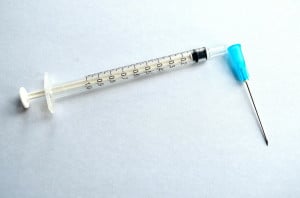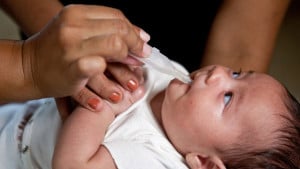IMMUNIZATION SCHEDULE IN INDIA 2020
Which vaccine should I give my baby?
At what age?
What if I forget?
Ok, so you probably already know that Immunization is vital for your baby.
But they are so many vaccinations to keep track of and it can all get too CONFUSING.
But don’t sweat …We are here to help you out.
How am I going to help you? I will…
- Provide you with the Vaccination & Immunization Schedule in India for 2019-2020 (based on IAP).
- Teach you how to read the chart.
- What happens if you forget to take your baby for the vaccine?
- How can you catch up? – The catch-up chart.
- Teach you how to read the catch up chart.
- FAQ’s
Ready? Here goes…
IMMUNIZATION SCHEDULE IN INDIA 2020
1.VACCINATION & IMMUNIZATION SCHEDULE FOR INDIAN CHILDREN (2020)
The INDIAN ACADEMY OF PAEDIATRICS (IAP) analyses all the studies and global trends involving the effectiveness of various vaccines.
What does IAP do?
This committee:
- Makes a list of recommended vaccines.
- Amends the necessary changes to the immunization schedule (which is applicable for all Indian children) on an annual basis.
So without further ado, the various vaccines, their booster doses, timing, instructions etc. are as follows:
IMMUNIZATION SCHEDULE IN INDIA 2020
| S.No | Vaccine | Prevents | Minimum Age for Dose 1 | Interval Between Dose 1 and Dose 2 | Interval Between Dose 2 and Dose 3 | Interval Between Dose 3 and Dose 4 | Interval Between Dose 4 and Dose 5 |
|---|---|---|---|---|---|---|---|
| 1 | BCG | TB & bladder cancer | Birth | ||||
| 2 | HepB | Hepatitis B | Birth | 4 weeks | 8 weeks | ||
| 3 | Poliovirus | Polio | Birth | 4 weeks | 4 weeks | ||
| 4 | DTP | Diphtheria, Tetanus & Pertussis | 6 weeks | 4 weeks | 4 weeks | 6 months (Booster 1) | 3 years (Booster 2) |
| 5 | Hib | Infections caused by Bacteria | 6 weeks | 4 weeks | 4 weeks | 6 months (Booster 1) | |
| 6 | PCV | Pneumonia | 6 weeks | 4 weeks | 4 weeks | 6 months (Booster 1) | |
| 7 | RV | Severe Diarrheal Disease | 6 weeks | 4 weeks | 4 weeks | ||
| 8 | Typhoid | Typhoid Fever, Diarrhea | 9 months | 15 months (Booster 1) | |||
| 9 | MMR | Measles, Mumps & Rubella | 9 months | 6 months | |||
| 10 | Varicella | Chickenpox | 1 year | 3 months | |||
| 11 | HepA | Liver disease | 1 year | 6 months | |||
| 12 | Tdap | Diphtheria, Tetanus & Pertussis | 7 years | ||||
| 13 | HPV | Some Cancers & Warts | 9 years | For Child aged 9-14 years: 6 months. For Child aged 15 or more: 1 month | For Child aged 15 or more: 5 months |
This chart is based on IAP recommended immunization schedule 2014. Make sure you read official IAP recommendation file and foot notes. It can be accessed here.
2. HOW TO READ THIS CHART?
The vaccine schedule is basically divided into 2 parts:
The age at which your child receives the 1st dose and the time gap between future doses. EXAMPLE:
DTP VACCINE:
Your baby should receive the 1st dose of the DTP vaccine at least 6 weeks after birth.
The 2nd dose should be given 4 weeks after the 1st dose
The 3rd dose takes place 4 weeks after the 2nd dose.
Booster 1 takes place 6 months after the 3rd dose.
And Booster 2 is given 3 years after Booster 1.
Got it? That’s easy, right?
Now you can read the entire chart this way.
3. OH NO! I MISSED THE DATE
Forgot to take your baby for the vaccine?
What’s going to happen now? If certain vaccination doses are missed or delayed due to unforeseen circumstances, a CATCH-UP VACCINATION SCHEDULE kicks into gear.
First thing you need to do is consult your child paediatrician immediately!
4. THE CATCH-UP CHART
The catch-up vaccination schedule makes sure that all the vaccines are administered appropriately after taking the delayed/missed dose into account.
The catch-up schedule is as follows:
IMMUNIZATION CATCH-UP CHART SCHEDULE IN INDIA 2020
| S.No | Vaccine | Prevents | Minimum Age for Dose 1 | Interval Between Dose 1 and Dose 2 | Interval Between Dose 2 and Dose 3 | Interval Between Dose 3 and Dose 4 | Interval Between Dose 4 and Dose 5 |
|---|---|---|---|---|---|---|---|
| 1 | BCG | TB & bladder cancer | Can be given till age 5 only | ||||
| 2 | HepB | Hepatitis B | If missed at birth, then as soon as possible. | 1 month | 5 months | ||
| 3 | Poliovirus | Polio | First month after birth | 1 month | 6 months | ||
| 4 | DTP | Diphtheria, Tetanus & Pertussis | Any time | 1 month | 5 months | ||
| 5 | Hib | Infections caused by Bacteria | Can be given till age 5 only. | 4 weeks | 6 months (Booster 1) | 6 months | 6 months (Booster 2) |
| 6 | PCV | Pneumonia | Dose when aged between 2-5 years old | ||||
| 7 | RV | Severe Diarrheal Disease | Age should be less than 6 months | 4 weeks | 4 weeks | ||
| 8 | Typhoid | Typhoid Fever, Diarrhea | Can be given any time | ||||
| 9 | MMR | Measles, Mumps & Rubella | For school-aged children | 4 weeks | |||
| 10 | Varicella | Chickenpox | Can be given any time | For ages 7-12 years: 3 months. For ages 13-18 years: 4 weeks | |||
| 11 | HepA | Liver disease | Can be give any time | 6 months | |||
| 12 | Tdap | Diphtheria, Tetanus & Pertussis | For ages 7-10 years: 1st dose. For ages 11-18 years: One dose. | Ages 7-10: 1 month | Ages 7-10: 5 months |
5. HOW TO READ THE CATCH-UP CHART?
The vaccine schedule is again divided into 2 parts.
Part 1: If you forget the first dose, what should you do?
Part 2: Time interval between future doses. EXAMPLE:
DTP VACCINE:
If your baby misses the original DTP vaccine which is given 6 weeks after birth (see original Vaccination Schedule), then,
The 1st dose of the catch-up version of the vaccine can be given any time.
The 2nd dose is given a month later.
The 3rd dose should take place 5 months after the 2nd dose.
6. FAQ’S
1. WHY DOES MY BABY NEED VACCINATION?
Your child needs vaccination as it provides a thorough defence (or immunity) against a potentially deadly disease.
Vaccination has proven to be the most effective method to stop the spread of infectious diseases like smallpox, polio etc.
Children are injected with certain vaccines as soon as their immune systems have developed sufficiently.
The rate of the development of the immune system leads to the formation of a vaccination or immunization chart.
Additional ‘booster’ shots are also required to achieve full immunity to a particular disease.
2. HOW DO VACCINES WORK?

Yes, you are going to inject your child with a potentially deadly virus!!
But you needn’t worry…
Your baby’s immune system is fully capable of recognizing and dealing with these threats.
And once your baby’s immune system has dealt with the virus, it keeps a record of it in the immune system.
Your child is now capable of identifying & dealing with similar threats in the future.
3. ARE THERE ANY SIDE EFFECTS AFTER IMMUNIZATION?
The vaccines are made as safe & effective as possible, but every piece of medication manufactured has unwanted side-effects. Common side-effects following vaccination are mild and fleeting in nature.
They usually last for 1-2 days after immunization.
The side-effects can range from mild fever to pain at the injection site.
If the symptoms persist for more than a few days, please consult your paediatrician for further advice. If you are more comfortable with electronic information, you can always download the IAP’s official Immunization App from the Android store.
The application contains the vaccination chart, FAQ’s, list of diseases and vaccines in a very easy-to-read manner.
It even has a checklist which can be modified according to your baby’s details.
Timely reminders can be received whenever it is time for vaccination.
>>> DOWNLOAD IMMUNIZATION CHART <<<
OTHER GENERAL INSTRUCTIONS:
- Vaccination at birth ranges from as early as possible to not more than a week after birth.
- Suppose your child has to take more that 1 vaccine on the same day, but due to some reason, the first one is given and there is a delay in the next, make sure the vaccines are injected within 24 hours of each other.
- That is, the delay shouldn’t exceed 24hrs.
- The recommended age in terms of weeks/months/years refers to the completed age of your baby in equivalent terms.
- Combination vaccines (vaccines for multiple diseases rolled into a single injection) are generally preferred over separate injections.
- The change of needles between drawing vaccine into the syringe and injecting into your child is not necessary.
- Multiple vaccines of different types SHOULD NOT BE MIXED in the same syringe without specific licenses and labels.
- Your baby should be observed very closely for 15-20 minutes after receiving an immunization. Be on the lookout for any allergic reactions.
- Whenever necessary, 2 vaccines can be injected into the same limb in a single visit.
- The distance separating 2 injection spots on the body should be at least 1 inch so as to make sure that local reactions do not overlap.
- A previous immunization with a less than standard dose or one which has been administered in a non-standard manner should not be counted and your baby should be re-immunized appropriately.
That pretty much sums up the general vaccinations that every child receives.
>>> DOWNLOAD IMMUNIZATION CHART <<<
VACCINES FOR HIGH-RISK CHILDREN
WHO IS A HIGH-RISK CHILD?
A child is classified as ‘high-risk’ when he/she has a congenital disorder, a weak immune system (including HIV), asthma, heart/lung problems, blood, liver and kidney diseases.
Even children who have pets at home or those who have a high risk of being bitten by dogs are considered as such.
IAP recommends at least 7 vaccines for children belonging to the high-risk category:
- Influenza Vaccine
- Meningococcal Vaccine
- Japanese Encephalitis Vaccine
- Cholera Vaccine
- Rabies Vaccine
- Yellow Fever Vaccine
- Pneumococcal Polysaccharide Vaccine
For more information regarding the circumstances where these high-risk vaccines come into play, it is better to approach your paediatrician. For more details, you can also read about them on the IAP’s recommendations for 2014.
SAFE VACCINATION PRACTICES
There are a few practices that will help you administer safe vaccines to your kid:
- Always check for the expiry date on vaccines. Usually, the doctor will paste a strip containing vaccine details on the first page of your child’s medical file. Always get that done as it will help you to keep track of all vaccines administered till the end.
- See that a new fresh syringe is used whenever the vaccine is administered.
- Hold the child tight and don’t let him move while administering the vaccine as the injection may cut through the skin.
- Avoid bringing the child out of doctor’s clinic when he cries. As the child may carry the memory of hurt with him and will start crying every time he sees the doctor. But, if you let the child calm down there itself then the child is more comfortable visiting the doctor next time.
- Always prefer administering vaccines in morning time as you get ample time until night to see if there are any allergies or ill-effects and you can immediately seek medical help if there are any such symptoms.
- Always keep paracetamol handy to help the child overcome fever and pain, if it shows up after vaccination.
About IAP The Indian Academy of Paediatrics was established in Mumbai in the year 1963. This academy has more than 150 paediatricians as members. By 2013, this academy has attained 23,000 members and had its wings in 26 states and 303 districts.
How to prepare a child for a doctor’s visit?
Always talk positively about the doctor to prepare your child mentally. Talk to the child about the purpose of making this visit. Assure your child that during the examination, you will be with him all the time.
The main concern that a child has is a fear of being examined by a stranger. Try to build a positive image of the doctor by sharing your own experiences with your child. Also, try to address all the concerns that he comes up with.
Normally, kids are also worried about whether examination or check-up will involve pain of any sort. Some kids hold the biggest fear of getting shots by the doctor. You may want to counsel the child before the visit to help him feel comfortable in front of the doctor.
CONCLUSION:
I hope this article helped you understand all you need to know about your child’s Vaccination and Immunization schedule.
Feel free to download the charts and share it with all parents who you think it would help.
Get your own copy of the IMMUNIZATION SCHEDULE.
Click ‘Download’ and we’ll email it to you. Bookmark this page for easy access in future.
DISCLAIMER:
All images are used for representational purposes only.
Please consult your child’s paediatrician for the exact dates of vaccination.




